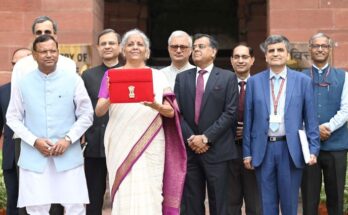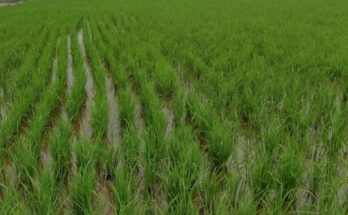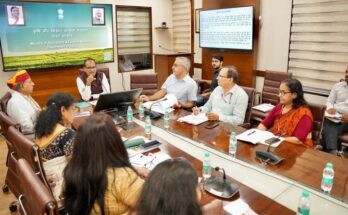The Union Cabinet, chaired by Prime Minister Narendra Modi has given its approval to launch a new Mission on oil palm to be known as the National Mission on Edible Oils – Oil Palm (NMEO-OP) as a new Centrally sponsored scheme with a special focus on the northeast region and the Andaman and Nicobar Islands. Due to the heavy dependence on imports for edible oils, it is important to make efforts for increasing the domestic production of edible oils in which increasing area and productivity of oil palm play an important part.
A financial outlay of Rs.11,040 crore has been made for the scheme, out of which Rs.8,844 crore is the Government of India share and Rs.2,196 crore is state share and this includes the viability gap funding also.
Under this scheme, it is proposed to cover an additional area of 6.5 lakh hectares (ha.) for oil palm till the year 2025-26 and thereby reaching the target of 10 lakh hectares ultimately. The production of crude palm oil (CPO) is expected to go upto 11.20 lakh tonnes by 2025-26 and upto 28 lakh tonnes by 2029-30.
The scheme will benefit the oil palm farmers, increase capital investment, create employment generation, shall reduce the import dependence and also increase the income of the farmers.
Since 1991-92, many efforts have been made by the Government of India to increase the production of oilseeds and oil palm. The oilseeds production has increased from 275 lakh tonnes in 2014-15 to 365.65 lakh tonnes in 2020-21. For harnessing the potential of palm oil production, in the year 2020, an assessment has been made by the Indian Institute of Oil Palm Research (IIOPR) for the cultivation of oil palm which has given an assessment of around 28 lakh ha. Thus, there is huge potential in oil palm plantation and subsequently production of crude palm oil (CPO). At present only 3.70 lakh hectares is under oil palm cultivation. Oil palm produces 10 to 46 times more oil per hectare compared to other oilseed crops and has a yield of around 4 tonnes oil per ha. Thus, it has enormous potential for cultivation.
Keeping it in view, and also the fact that even today around 98 per cent of CPO is being imported, it was proposed to launch the scheme to further increase the area and production of CPO in the country. The proposed scheme will subsume the current National Food Security Mission-Oil Palm programme.
Salient features of National Mission on Edible Oils – Oil Palm
There are two major focus areas of the scheme. The oil palm farmers produce fresh fruit bunches (FFBs) from which oil is extracted by the industry. Presently the prices of these FFBs are linked to the international CPO prices fluctuations. Now, the Government of India will give price assurance to the oil palm farmers for the FFBs. This will be known as the Viability Price (VP). This will protect the farmers from the fluctuations of the international CPO prices and protect them from volatility. This VP shall be the annual average CPO price of the last five years adjusted with the wholesale price index to be multiplied by 14.3 per cent. This will be fixed yearly for the oil palm year from November 1 to October 31. This assurance will inculcate confidence in the Indian oil palm farmers to go for the increased area and thereby more production of palm oil. A formula price (FP) will also be fixed which will be 14.3 per cent of CPO and will be fixed on a monthly basis. The viability gap funding will be the VP-FP and if the need arises, it would be paid directly to the farmers’ accounts in the form of direct benefit transfer (DBT).
You may also like: Centre sets up Dairy Investment Accelerator to facilitate investments in dairy sector
The assurance to the farmers will be in the form of the viability gap funding and the industry will be mandated to pay 14.3 per cent of the CPO price which will eventually go up to 15.3 per cent. There is a sunset clause for the scheme which is November 1, 2037. To give impetus to the northeast and Andaman 7 Nicobar Islands, the Government will additionally bear a cost of 2 per cent of the CPO price to ensure that the farmers are paid at par with the rest of India. The states who adopt the mechanism proposed by the Government of India would benefit from the viability gap payment proposed in the scheme and for this, they will enter into MoUs with the Central government.
The second major focus of the scheme is to substantially increase the assistance of inputs and interventions. A substantial increase has been made for planting material for oil palm and this has increased from Rs 12,000 per ha to Rs.29,000 per ha. A further substantial increase has been made for maintenance and inter-cropping interventions. Special assistance at Rs 250 per plant will be given to replant old gardens for rejuvenation of old gardens.
To address the issue of shortage of planting material in the country, seed gardens will be provided assistance up to Rs.80 lakh for 15 ha. in the rest of India and Rs.100 lakhs for 15 ha in northeast and Andaman regions. Further, assistance for seed gardens at Rs.40 lakh and Rs.50 lakh for the rest of India and northeast and Andaman regions respectively. Further, special assistance will be provided for the northeast and the Andaman regions in which special provisions is being made for half moon terrace cultivation, bio fencing and land clearance along with integrated farming. For capital assistance to the industry, for the northeast states and Andaman region, a provision of Rs five core of 5 mt/hr unit with pro-rata increase for higher capacity. This will attract the industry to these regions.




